Download Pallas Asteroid Worksheets
Click the button below to get instant access to these premium worksheets for use in the classroom or at a home.
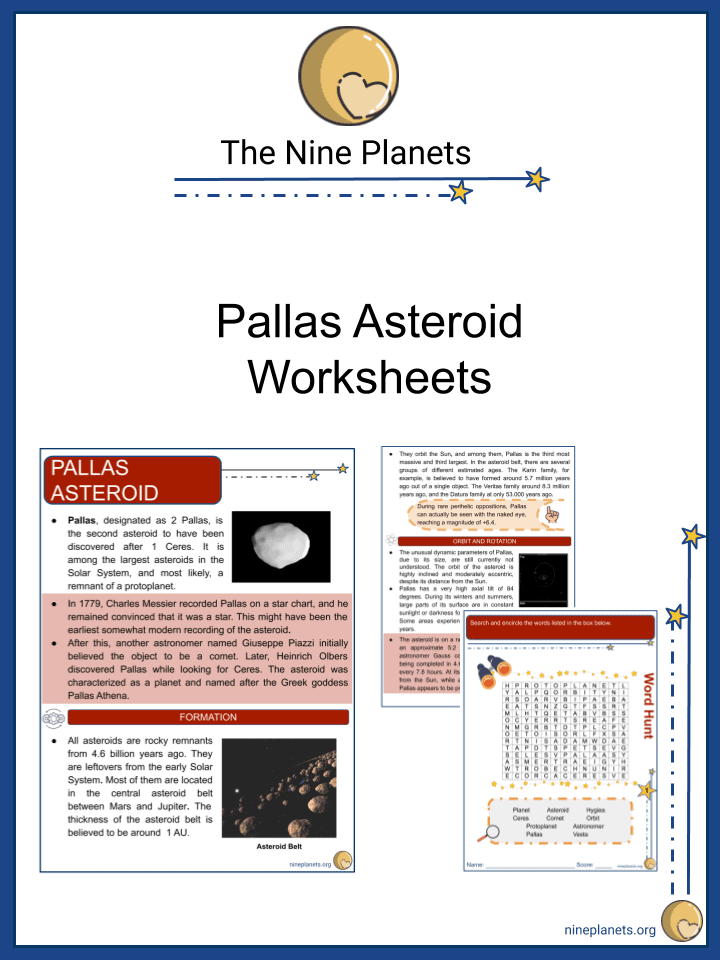
This worksheet can be edited by Premium members using the free Google Slides online software. Click the Edit button above to get started.
Download free sample
Not ready to purchase a subscription yet? Click here to download a FREE sample of this worksheet pack.
Resource Examples
Click any of the example images below to view a larger version.
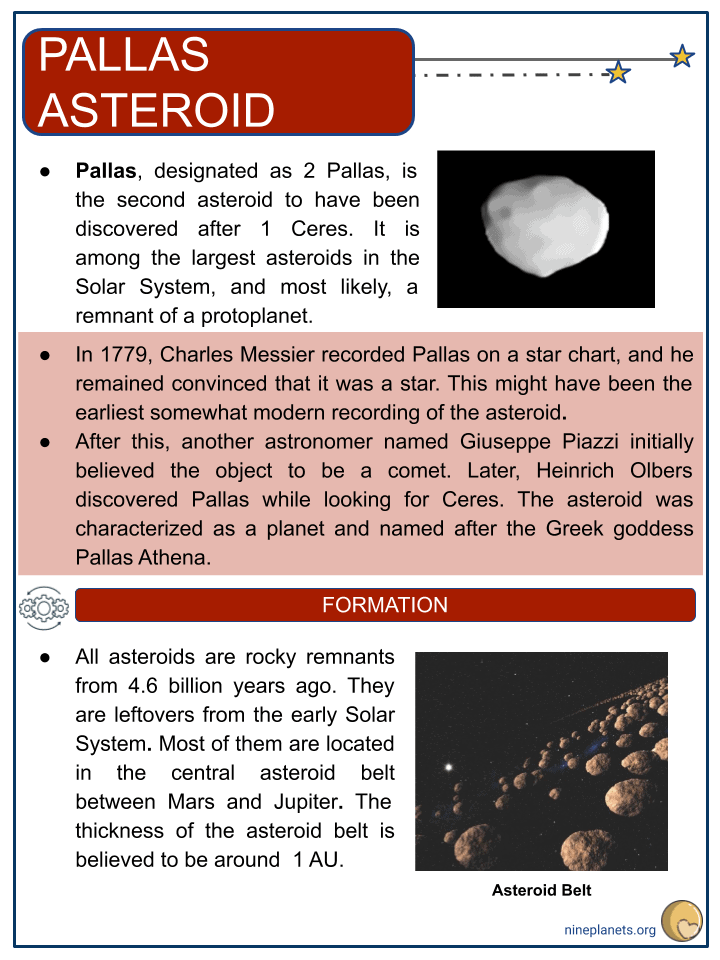
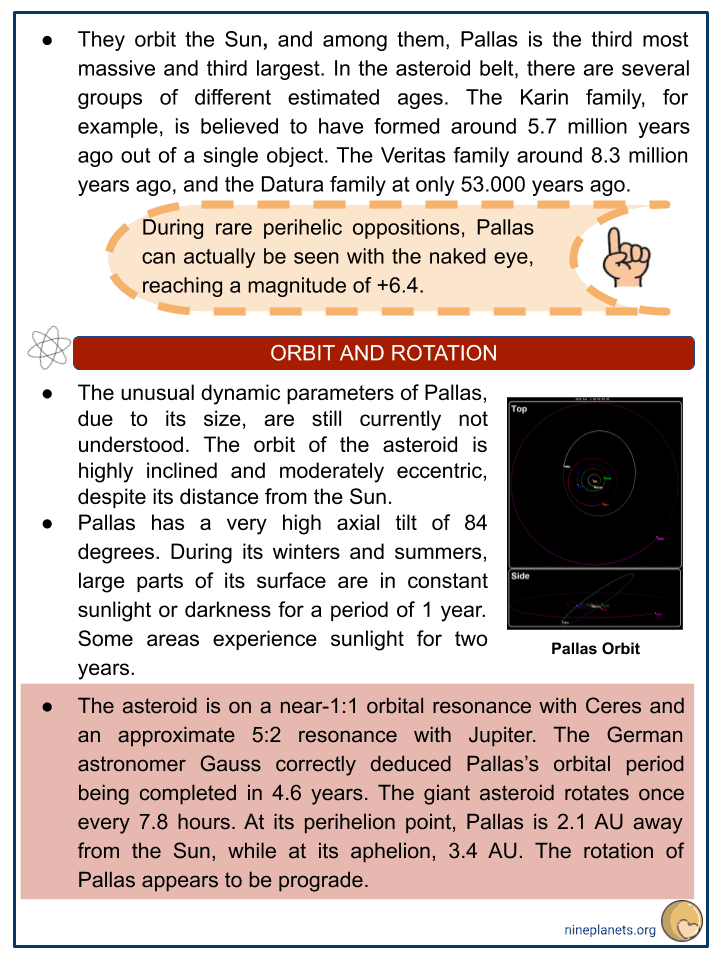
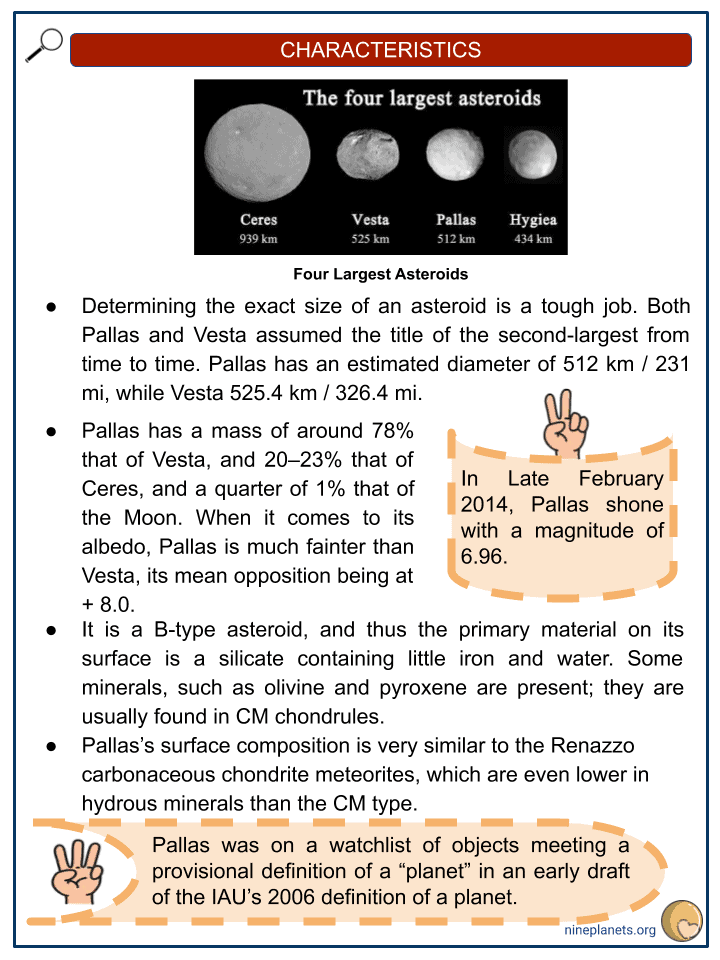
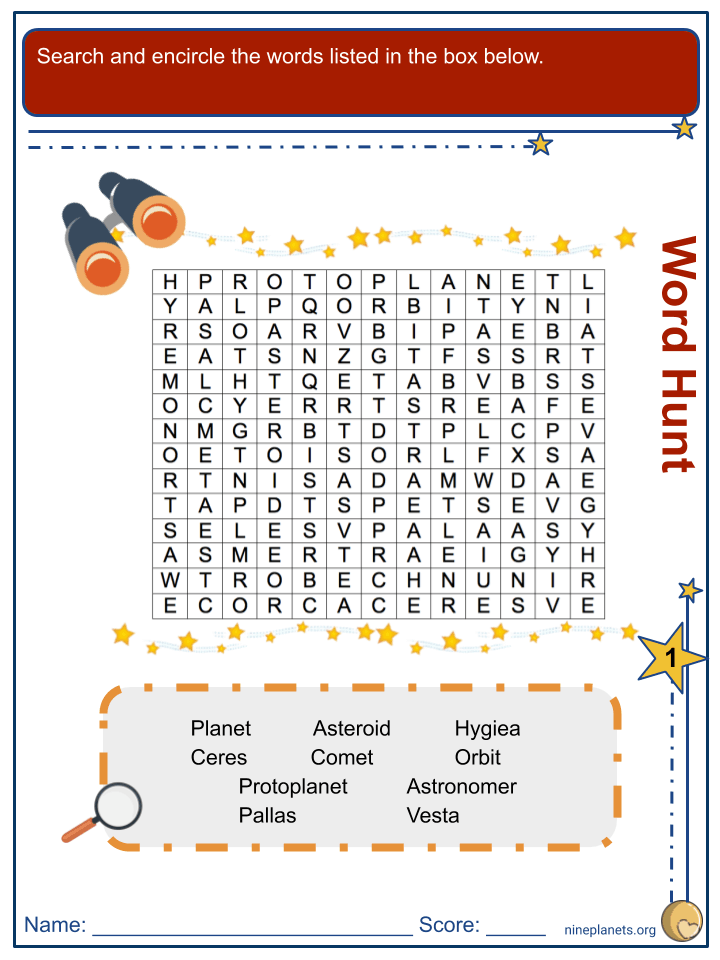
Key Facts & Information
- Pallas, designated as 2 Pallas, is the second asteroid to have been discovered after 1 Ceres. It is among the largest asteroids in the Solar System, and most likely, a remnant of a protoplanet.
- In 1779, Charles Messier recorded Pallas on a star chart, and he remained convinced that it was a star. This might have been the earliest somewhat modern recording of the asteroid.
- After this, another astronomer named Giuseppe Piazzi initially believed the object to be a comet. Later, Heinrich Olbers discovered Pallas while looking for Ceres. The asteroid was characterized as a planet and named after the Greek goddess Pallas Athena.
Formation
- All asteroids are rocky remnants from 4.6 billion years ago. They are leftovers from the early Solar System. Most of them are located in the central asteroid belt between Mars and Jupiter. The thickness of the asteroid belt is believed to be around 1 AU.
- They orbit the Sun, and among them, Pallas is the third most massive and third largest. In the asteroid belt, there are several groups of different estimated ages. The Karin family, for example, is believed to have formed around 5.7 million years ago out of a single object. The Veritas family around 8.3 million years ago, and the Datura family at only 53.000 years ago.
- During rare perihelic oppositions, Pallas can actually be seen with the naked eye, reaching a magnitude of +6.4.
Orbit And Rotation
- The unusual dynamic parameters of Pallas, due to its size, are still currently not understood. The orbit of the asteroid is highly inclined and moderately eccentric, despite its distance from the Sun.
- Pallas has a very high axial tilt of 84 degrees. During its winters and summers, large parts of its surface are in constant sunlight or darkness for a period of 1 year. Some areas experience sunlight for two years.
- The asteroid is on a near-1:1 orbital resonance with Ceres and an approximate 5:2 resonance with Jupiter. The German astronomer Gauss correctly deduced Pallas’s orbital period being completed in 4.6 years. The giant asteroid rotates once every 7.8 hours. At its perihelion point, Pallas is 2.1 AU away from the Sun, while at its aphelion, 3.4 AU. The rotation of Pallas appears to be prograde.
Characteristics
- Determining the exact size of an asteroid is a tough job. Both Pallas and Vesta assumed the title of the second-largest from time to time. Pallas has an estimated diameter of 512 km / 231 mi, while Vesta 525.4 km / 326.4 mi.
- Pallas has a mass of around 78% that of Vesta, and 20–23% that of Ceres, and a quarter of 1% that of the Moon. When it comes to its albedo, Pallas is much fainter than Vesta, its mean opposition being at + 8.0.
- It is a B-type asteroid, and thus the primary material on its surface is a silicate containing little iron and water. Some minerals, such as olivine and pyroxene are present; they are usually found in CM chondrules.
- Pallas’s surface composition is very similar to the Renazzo carbonaceous chondrite meteorites, which are even lower in hydrous minerals than the CM type.
- Pallas was on a watchlist of objects meeting a provisional definition of a “planet” in an early draft of the IAU’s 2006 definition of a planet.
- RM meteorites are among the most primitive meteorites ever discovered. The visible and near-infrared spectrum of Pallas is almost flat, being slightly brighter in towards blue. There is only one clear absorption band in the 3-micron part, which suggests an anhydrous component mixed with hydrated CM-like silicates.
- Because of Pallas’s low albedo of 0.12, very little is known about its surface features. The second-largest asteroid seems to have undergone at least some degree of thermal alteration and partial differentiation.
- This suggests that Pallas might be a remnant protoplanet. During the planetary formation stage of the Solar System, objects grew in size through the accretion process to around this size. Many of these celestial objects were later incorporated into larger ones, which became planets.
- Others were destroyed in collisions with other protoplanets. Both Pallas and Vesta are considered survivors from this early stage of planetary formation.
- If you were to stand on Pallas, you would see Mercury, Venus, Mars, and Earth occasionally transiting, or passing in front of the Sun. These transitions will happen again in hundreds of years
The Future
- Though Pallas hasn’t been visited by a spacecraft, it will be shortly. The proposed Athena SmallSat mission, if funded, would be launched in 2022 as a secondary payload of the Psyche mission, and would travel on a separate trajectory to a flyby encounter with Pallas 2.
- When it comes to the long term, both Pallas and the asteroid belt will be destroyed in the far future by our Sun’s last light. The high heat and radiation will spare nothing, and most celestial objects will be reduced to nothingness.
Key Facts And Summary
- Pallas constitutes around 7% of the mass of the asteroid belt.
- It is the third most massive and third most large asteroid ever discovered.
- Pallas is slightly smaller, around three quarters the mass of 4 Vesta and and one quarter the mass of Ceres.
- Pallas has a diameter of 510 km / 230 mi.
- The second asteroid was discovered in 1802, and it was considered for some time a planet like most of the celestial objects found in the 19th century.
- After many more asteroids were discovered, after 1845, the time for reclassification had begun.
- Studies suggest that Pallas’s surface is most likely composed out of silicate material.
- Pallas’s spectrum resembles that of carbonaceous chondrite meteorites.
- The second asteroid has an orbital inclination of 34.8 degrees.
- Its orbit is unusually highly inclined to the plane of the asteroid belt, making Pallas inaccessible to spacecraft.
- Pallas’s orbital eccentricity is nearly as large as that of Pluto.
- It was considered a planet since 2006. However, once its shape was determined, it departs significantly from an ellipsoid, it lost its title.
- The apparent magnitude of Pallas varies from 6.49 to 10.65.
- The absolute magnitude of Pallas has been estimated to be at 4.13.
- Pallas is a spectral type B asteroid.
- Though some satellites were suggested to exist through different events such as occultations, they have yet to be observed clearly.
- Pallas is likely in a coincidental near 1:1 orbital resonance with Ceres.
- The second asteroid also has a near -18:7 orbital resonance / 91.700 year period, and an approximate 5:2 resonance / 83-year period with Jupiter.
- The orbit of Pallas was determined by the German astronomer Gauss.
- The Pallas family has more than 10 members with semi-major axes between 2.50 to 2.82 AU, and inclinations of 33-3 degrees.